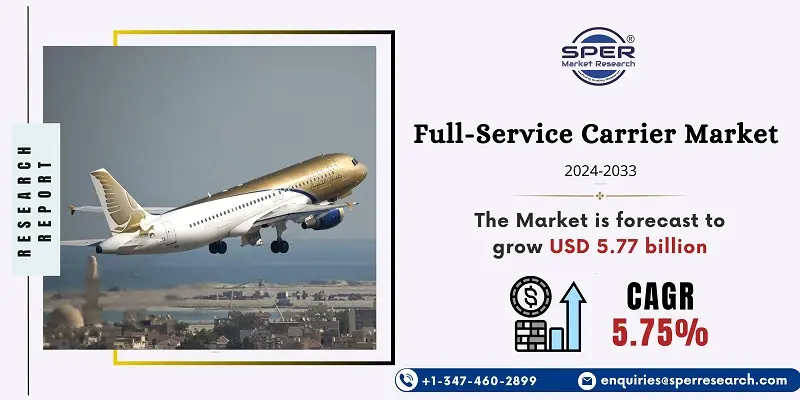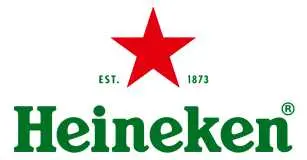
Full-Service Carrier Market Growth, Size, Trends, Demand, Share, Revenue and Future Outlook
Full-Service Carrier Market Growth, Trends, Analysis, Size- By Aircraft Type, By Service Type- Regional Outlook, Competitive Strategies and Segment Forecast to 2033
| Published: Aug-2024 | Report ID: AERO2425 | Pages: 1 - 248 | Formats*: |
| Category : Aerospace and Defence | |||
- June 2024: Denver became Turkish Airlines' 14th destination, thereby expanding the airline's reach within the US. The first service consists of three weekly trips, with an additional flight every week scheduled to begin in July 2024. The purpose of this action was to improve trade and tourism by acting as a bridge between Turkey and the US.
- October 2023: United Airlines ordered 110 more aircraft, including 60 Airbus A321neos and 50 Boeing 787-9s, greatly increasing the size of its fleet. These planes will be delivered between 2028 and 2030. In addition to supporting the company's long-term fleet strategy, this action attempts to increase operational flexibility.


| Report Metric | Details |
| Market size available for years | 2020-2033 |
| Base year considered | 2023 |
| Forecast period | 2024-2033 |
| Segments covered | By Aircraft Type, By Service Type |
| Regions covered | North America, Asia-Pacific, Latin America, Middle East & Africa and Europe. |
| Companies Covered | Delta Air Lines, Inc, Etihad Airways, IAG International Airlines Group, Japan Airlines, Lufthansa Group, Qatar Airways, Turkish Airlines, The Emirates Group, and United Airlines, Inc. |
- Business Travelers
- Premium Leisure Travelers
- Frequent Flyers
- Corporate Clients
- High-Net-Worth Individuals
- Family Travelers
- Travel Agencies and Tour Operators
- Government and Diplomatic Passengers
| By Aircraft Type: | |
| By Service Type: |
- Global Full-Service Carrier Market Size (FY’2024-FY’2033)
- Overview of Global Full-Service Carrier Market
- Segmentation of Global Full-Service Carrier Market by Aircraft Type (Fixed-Wing Aircraft, Rotary-Wing Aircraft)
- Segmentation of Global Full-Service Carrier Market by Service Type (In-Flight Entertainment, Meals, Beverages, Others)
- Statistical Snap of Global Full-Service Carrier Market
- Expansion Analysis of Global Full-Service Carrier Market
- Problems and Obstacles in Global Full-Service Carrier Market
- Competitive Landscape in the Global Full-Service Carrier Market
- Impact of COVID-19 and Demonetization on Global Full-Service Carrier Market
- Details on Current Investment in Global Full-Service Carrier Market
- Competitive Analysis of Global Full-Service Carrier Market
- Prominent Players in the Global Full-Service Carrier Market
- SWOT Analysis of Global Full-Service Carrier Market
- Global Full-Service Carrier Market Future Outlook and Projections (FY’2024-FY’2033)
- Recommendations from Analyst
1.1. Scope of the report1.2. Market segment analysis
2.1. Research data source
2.1.1. Secondary Data2.1.2. Primary Data2.1.3. SPER’s internal database2.1.4. Premium insight from KOL’s
2.2. Market size estimation
2.2.1. Top-down and Bottom-up approach
2.3. Data triangulation
4.1. Driver, Restraint, Opportunity and Challenges analysis
4.1.1. Drivers4.1.2. Restraints4.1.3. Opportunities4.1.4. Challenges
4.2. COVID-19 Impacts of the Global Full-Service Carrier Market.
5.1. SWOT Analysis
5.1.1. Strengths5.1.2. Weaknesses5.1.3. Opportunities5.1.4. Threats
5.2. PESTEL Analysis
5.2.1. Political Landscape5.2.2. Economic Landscape5.2.3. Social Landscape5.2.4. Technological Landscape5.2.5. Environmental Landscape5.2.6. Legal Landscape
5.3. PORTER’s Five Forces
5.3.1. Bargaining power of suppliers5.3.2. Bargaining power of buyers5.3.3. Threat of Substitute5.3.4. Threat of new entrant5.3.5. Competitive rivalry
5.4. Heat Map Analysis
6.1. Global Full-Service Carrier Market Manufacturing Base Distribution, Sales Area, Product Type6.2. Mergers & Acquisitions, Partnerships, Product Launch, and Collaboration in Global Full-Service Carrier Market
7.1. Global Full-Service Carrier Market Size, Share and Forecast, By Aircraft Type, 2020-20267.2. Global Full-Service Carrier Market Size, Share and Forecast, By Aircraft Type, 2027-20337.3. Fixed-Wing Aircraft7.4. Rotary-Wing Aircraft
8.1. Global Full-Service Carrier Market Size, Share and Forecast, By Service Type, 2020-20268.2. Global Full-Service Carrier Market Size, Share and Forecast, By Service Type, 2027-20338.3. In-Flight Entertainment8.4. Meals8.5. Beverages8.6. Others
9.1. Global Full-Service Carrier Market Size and Market Share
10.1. Global Full-Service Carrier Market Size and Market Share By Region (2020-2026)10.2. Global Full-Service Carrier Market Size and Market Share By Region (2027-2033)10.3. Asia-Pacific
10.3.1. Australia10.3.2. China10.3.3. India10.3.4. Japan10.3.5. South Korea10.3.6. Rest of Asia-Pacific
10.4. Europe
10.4.1. France10.4.2. Germany10.4.3. Italy10.4.4. Spain10.4.5. United Kingdom10.4.6. Rest of Europe
10.5. Middle East and Africa
10.5.1. Kingdom of Saudi Arabia10.5.2. United Arab Emirates10.5.3. Qatar10.5.4. South Africa10.5.5. Egypt10.5.6. Morocco10.5.7. Nigeria10.5.8. Rest of Middle-East and Africa
10.6. North America
10.6.1. Canada10.6.2. Mexico10.6.3. United States
10.7. Latin America
10.7.1. Argentina10.7.2. Brazil10.7.3. Rest of Latin America
11.1. DELTA AIR LINES, INC
11.1.1. Company details11.1.2. Financial outlook11.1.3. Product summary11.1.4. Recent developments
11.2. ETIHAD AIRWAYS
11.2.1. Company details11.2.2. Financial outlook11.2.3. Product summary11.2.4. Recent developments
11.3. IAG INTERNATIONAL AIRLINES GROUP
11.3.1. Company details11.3.2. Financial outlook11.3.3. Product summary11.3.4. Recent developments
11.4. JAPAN AIRLINES
11.4.1. Company details11.4.2. Financial outlook11.4.3. Product summary11.4.4. Recent developments
11.5. LUFTHANSA GROUP
11.5.1. Company details11.5.2. Financial outlook11.5.3. Product summary11.5.4. Recent developments
11.6. QATAR AIRWAYS
11.6.1. Company details11.6.2. Financial outlook11.6.3. Product summary11.6.4. Recent developments
11.7. THE EMIRATES GROUP
11.7.1. Company details11.7.2. Financial outlook11.7.3. Product summary11.7.4. Recent developments
11.8. TURKISH AIRLINES
11.8.1. Company details11.8.2. Financial outlook11.8.3. Product summary11.8.4. Recent developments
11.9. UNITED AIRLINES, INC
11.9.1. Company details11.9.2. Financial outlook11.9.3. Product summary11.9.4. Recent developments
11.10. Others
SPER Market Research’s methodology uses great emphasis on primary research to ensure that the market intelligence insights are up to date, reliable and accurate. Primary interviews are done with players involved in each phase of a supply chain to analyze the market forecasting. The secondary research method is used to help you fully understand how the future markets and the spending patterns look likes.
The report is based on in-depth qualitative and quantitative analysis of the Product Market. The quantitative analysis involves the application of various projection and sampling techniques. The qualitative analysis involves primary interviews, surveys, and vendor briefings. The data gathered as a result of these processes are validated through experts opinion. Our research methodology entails an ideal mixture of primary and secondary initiatives.



Frequently Asked Questions About This Report
PLACE AN ORDER
Year End Discount
Sample Report
Pre-Purchase Inquiry
NEED CUSTOMIZATION?
Request CustomizationCALL OR EMAIL US
100% Secure Payment






Related Reports
Our Global Clients
Our data-driven insights have influenced the strategy of 200+ reputed companies across the globe.






















